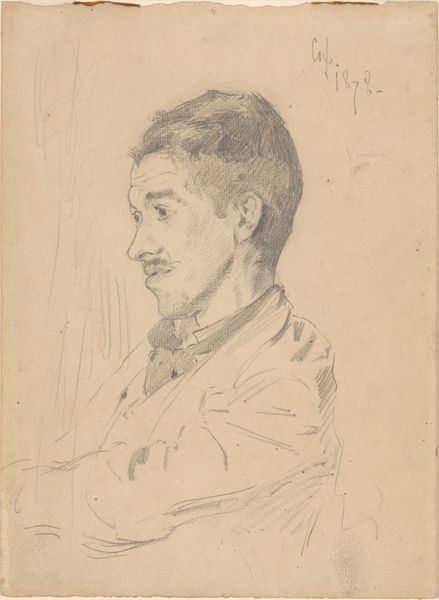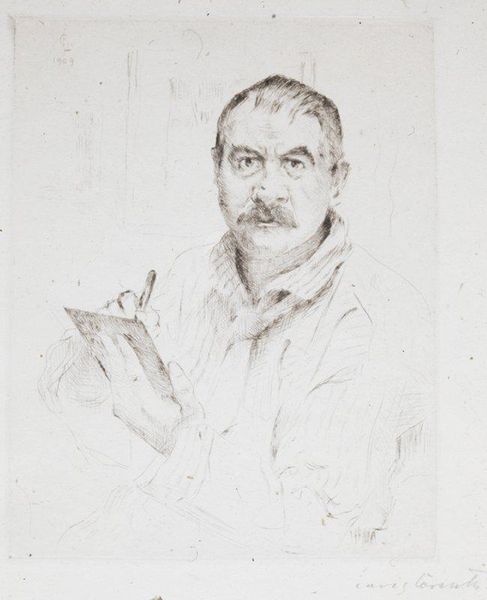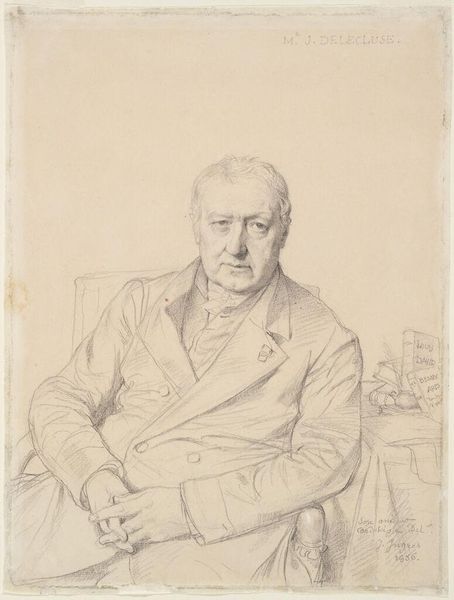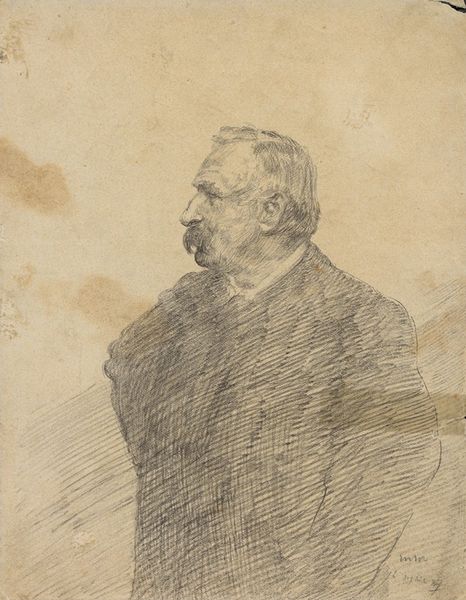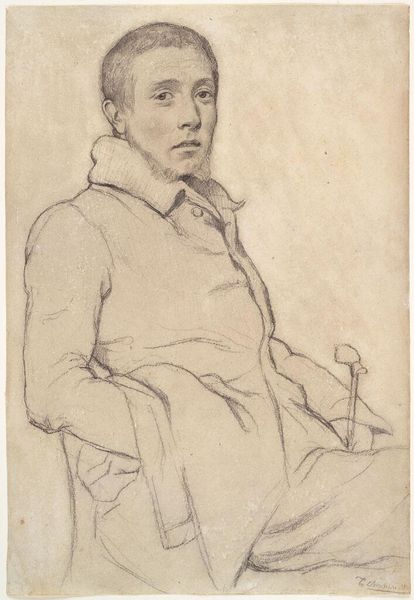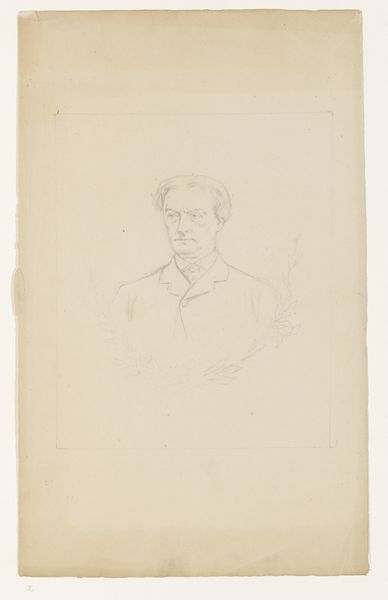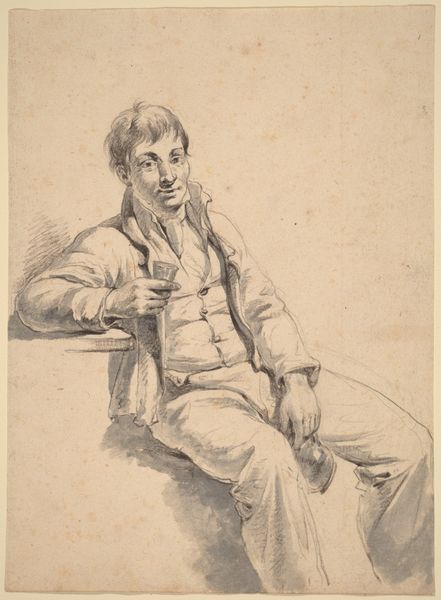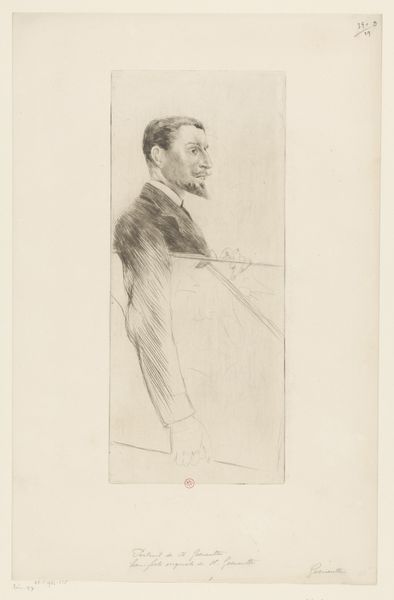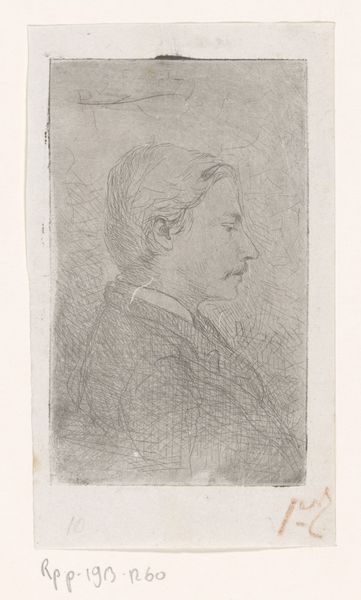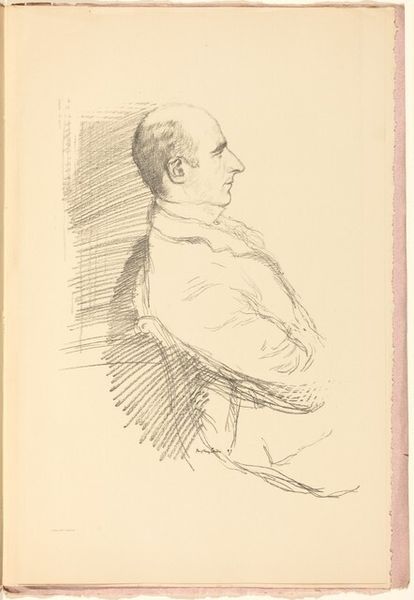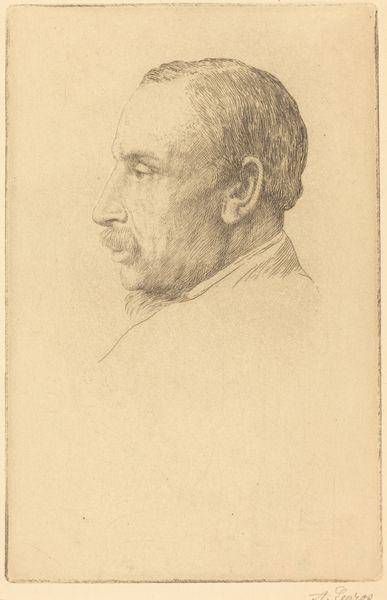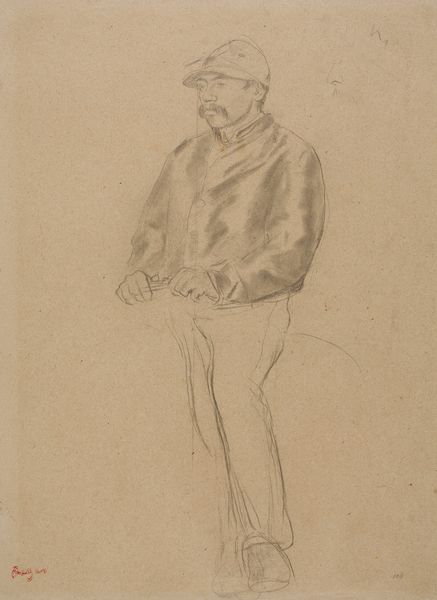
drawing, pencil
#
portrait
#
drawing
#
pencil drawing
#
pencil
#
portrait drawing
#
realism
Dimensions: 286 mm (height) x 245 mm (width) (bladmaal)
Curator: This drawing is titled "Portræt af maleren Fritz Melbye," a portrait of the painter Fritz Melbye, rendered in pencil by Camille Pissarro around 1853-1854. Editor: There’s an interesting contemplative mood here. The soft shading creates an almost dreamlike halo effect around his head, which contrasts with the unfinished sketchiness of the lower part of his body and clothes. Curator: The halo is created through skillful tonal contrasts, common in portraiture designed to capture a sense of depth and personality. It's interesting to situate Melbye, a marine painter, within Pissarro’s earlier, more traditional artistic style. Both men would become linked to the Danish colonial project in the Caribbean; Pissarro born there and Melbye worked later in life on a commission for the Venezuelan government to paint ports, railways, and settlements. How does the work then, through both their practices, embody the legacy of European exploration and artistic representation in these distant places? Editor: It makes me wonder if Pissarro chose the dark background on purpose, since it is the inverse of Melbye’s landscapes painted on bright seaside settings. I do see echoes of Romanticism, though—the artist captured with such dramatic shadowing hints to me at the internal life of a creative individual and a self-aware maker, much like Romantic heroes in art and literature from earlier in the century. The image also taps into universal ideals of friendship, artistry, and creative solidarity among members of the Danish art world. Curator: Yes, there’s definitely a social aspect to this portrait that connects the artist to broader conversations about the role of portraiture during an era defined by social stratification, economic inequality, race, gender and more. Pissarro and Melbye inhabited artistic circles often dominated by restrictive artistic conventions. Melbye did eventually exhibit work in Paris and gain exposure as part of French society—how then does this sketch show hints of that connection to the cultural metropole, while the two occupied different roles in Danish society during the 1850s? Editor: I find the direct, somewhat melancholic gaze to be extremely powerful. The shadow that darkens the expression could reflect the broader social turmoil of the time, captured in the eyes and face. The work seems unfinished, raw, and filled with humanity. Curator: Precisely. Understanding these visual symbols as artifacts rooted in history gives us such profound insight into Pissarro's social world. Editor: Absolutely, and it gives me a better sense of its quiet emotional power.
Comments
No comments
Be the first to comment and join the conversation on the ultimate creative platform.
